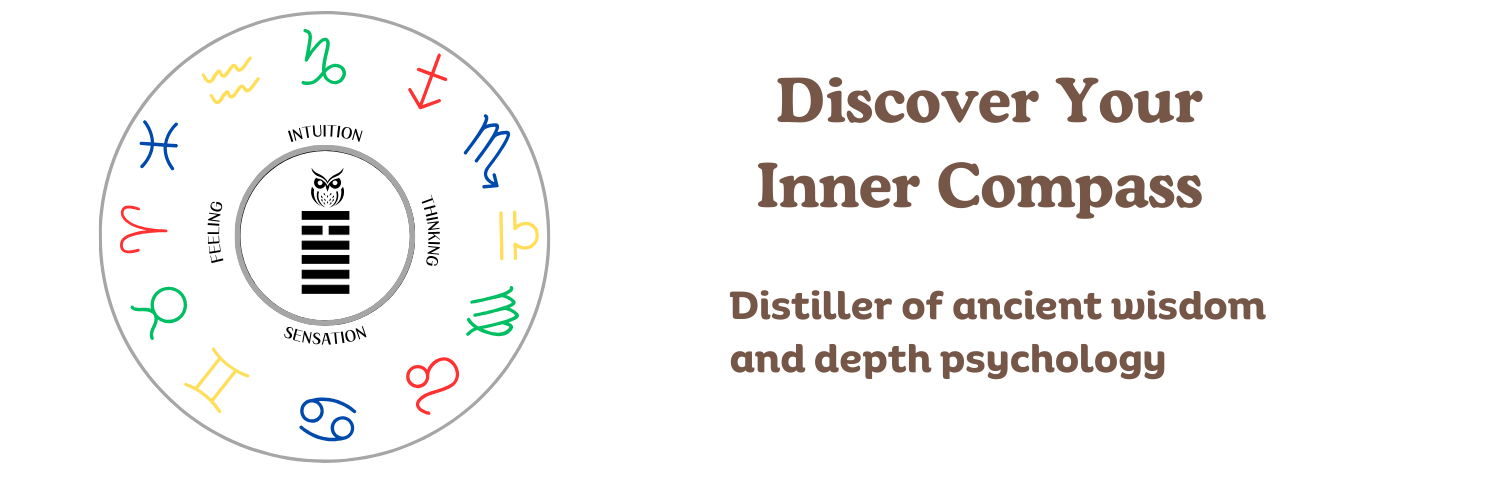The role of animals in your personality type
Did you know that animals play a role in your personality type?
I don’t just mean regular animals, although they are important. Like Jungian analyst James Hillman said, pets were the first psychoanalysts. I’m referring to the animal within with whom, according to Carl Jung, we must connect in order to become a whole person.
Jung said we have a “2 million-year-old man within” and that “we still have an animal character.” Our 2 million-year-old woman/man manifests in dreams where we experience numinous connections with animals. James Hillman called dreams “zoological cathedrals.”
Jungian analyst Dennis L. Merritt says:
The purpose of psychoanalysis is to enliven and enrich consciousness through contact with the animal instinctual level.
Jung again:
The body is the original animal condition, we are all animals in body, and so we have to have an animal psychology in order to be able to live in it. […] Since we have a body it is indispensable that we exist also as an animal.”
This brings us to the Objective Personality typology system.
Objective Personality: bringing animals to your personality
In addition to a function stack, Objective Personality includes an “animal stack” of four animal energies for each personality type. It’s like your body has a type of its own and this type has a direct connection to your personality type.
The animals are created by two cognitive functions working together. Here are the names and descriptions of the four animals as per the Objective Personality website:
Sleep — “Process and preserves energy for self, before expending energy for the tribe.”
Sleep is about budgeting one’s energy and attention. It’s what helps preserve the flow state in my mind.
Consume — “Takes in and respects info, before getting started and teaching.”
Listening, reading, and researching are some of the attributes of consume.
Blast– “ Gets started and is able to teach, before respecting and gathering info.”
Blast is often conflated with speaking, but this isn’t always the case with introverts people who have this animal. For introverts, blast is an internal energy that propels us. It’s also used to make our speaking and writing as concise as possible.
Play — Expends energy for the tribe, before processing and preserving energy for self.
Blast and Play are extroverted and Sleep and Consume are introverted. If two of your top three animals are introverted, then you are an introvert.
Conversely, if two of the top three animals are extroverted then you are extrovert.
The animal stacks can also help explain why some extroverts think they are an introvert and vice versa. The third animal in your animal stack is your “hobby” animal. For example, if someone has Consume as the third animal, they might tend to seek out reading and other Consume activities in their spare time. If someone has Sleep as their third animal, and their top two animals are the extroverted Play and Sleep animals, they might feel like they are an introvert sometimes, because they will be inclined to seek out Sleep activities in their spare time. These activities allow them to be quiet and recharge.
Create a field guide for your animal
You should also study your animal with objective or disinterested observations, the way a zoologist studies animals. Only you are studying the animal named you.
Jim Collins, the author of Good to Great and other business books, spent several years early in his career making detached observations about himself. But that’s not all. He also would make note when another individual would inspire him:
I’d spent a lot of it not just on my own experiences, but also very much on people that I admired. Not people from afar, people I knew and observed. Not their achievements, but something about the quality of what they were. And that was also a big part of that observation process.
How to care for your animal

The first step in caring for your animal is to understand how your animal cares for you.
Marie-Louise von Franz, who was a close associate of Carl Jung’s for several decades, and was an expert in both typology and fairy tales, said that the only “rule” or “ethic” in the mysterious world of fairy tales is this:
Anyone who earns the gratitude of animals, or whom they help for any reason, invariably wins out. This is the only unfailing rule I have been able to find.
Our animals are a vital support system to our cognitive functions. John Beebe describes the function stack as two axes. The “spine” axis is the hero (lead) function and anima/animus (inferior) function. These are the functions we use to develop ourselves.
The “arms” axis is the parent (auxiliary) and child (tertiary) functions. These are the functions we use to help others.
I view our animal as the reverse of this. Our lead and inferior animals helps us engage with the outside world. And our middle two animals help us take care of ourselves.
For example, Beebe says the second function is the parent function, but it is only able to parent others; it is not able to parent oneself very well. I think the second animal can swoop in and help you parent yourself.
The next step is to pay attention to your last animal. A person with Play last could endlessly remain in the realm of Blast/Sleep/Consume, but their body will occasionally let them know when they need to get up and move around, take a walk, or interact with others.
Those with Sleep last sometimes indicate they are capable of being on the go constantly, but their bodies will occasionally slow them down by getting sick, or they experience a flare up of a chronic medical condition. Then they spend a day or more in bed to recover.
Please feed your animals
The best scenario is to regularly “budget” time to engage with your last animal.
Someone with Play last could schedule regular time to exercise, schedule recurring lunches with co-workers or friends, and so on.
Someone with Blast last could engage in small activities with little planning beforehand or start writing blog or social media posts regularly with little preparation.
Someone with Consume last could have scheduled time where they read books, articles, watch documentaries, and so on. One consume last person said that after he finishes reading a book, he has to start a new book within 24 hours, otherwise there is the danger he will go months without reading any books.
Someone with Sleep last could budget a certain number of hours per week/month to devote to Sleep, which could involve writing a journal entry and reflecting in solitude with no set purpose.
Your animal helps you reach your full human potential

According to Jungian analyst Dennis L. Merritt:
To be truly human, Jung believed, and to reach our unique potential,we have to be in relationship to animals. This is both an outer relationship to animals and an intimate relationship with the collective unconscious, coming to terms with the animal in our inheritance.
The collective unconscious makes its appearance in our dreams quite often and is also a part of our animal nature. Keeping a dream journal is one way to maintain this connection with the numinous, archetypes, and your shadow side.
Many forces in our society suppress both our outer relationship to animals and our relationship to the collective unconscious. Making the unconscious conscious is the goal of individuation. Integrating your animal self is a part of this.
A good first step is to discuss your dreams with a Jungian analyst. Speaking from experience, (disclosure: I am a client of Dennis Merritt’s), I can’t emphasize the importance of this enough.
I think often about how animals are always fully themselves. A tiger doesn’t try to pretend to be a cow. A Northern Cardinal doesn’t pretend to be a Great Horned Owl.
Native Americans have a perfect model for this. When a boy reached puberty he was “put on a hill” and not given food or water for four days. He would call out for a vision in hopes of receiving his spirit animal, among other things.
According to Dennis L. Merritt:
The energy was embodied, for example, by studying the animal, wearing elements of it on one’s body, dancing it at sacred gatherings, etc. If a young man did not have a spirit animal he could not go into battle: it would be a crime for someone to die without ever knowing who they really were. [emphasis mine]
Humans are the only animal that can pretend to be someone they are not. This is also why personality typology is so important and an important tool for individuation, so you can understand your true essence beneath your persona.
Your type can be revealed to you over time through work with an analyst. I recommend studying the 8 function model of John Beebe, Lectures in Psychological Type by Marie-Louise Von Franz and James Hillman, the Enneagram (especially Don Richard Riso’s works and his concept of the Levels of Development), and the animal stack in Objective Personality, for a complete picture.
It seems appropriate to close this article with a quote from Ursula Le Guin, the fantasy and science fiction author:
The animal does not reason but it sees. And it acts with certainty; it acts ‘rightly,’ appropriately. That is why all animals are beautiful. It is the animal who knows the way, the way home.
Sources:
Dream Animals by James Hillman
Jung and Ecopsychology: The Dairy Farmer’s Guide to the Universe by Dennis L. Merritt, Ph.D. and Jungian Analyst
Care of the Soul a lecture by Dennis L. Merritt, Ph.D., February, 2019.
The Child and the Shadow, an essay in the book The Language of the Night: Essays on Fantasy and Science Fiction by Ursula Le Guin
Energies and Patterns in Psychological Type by John Beebe
Tim Ferriss Show interview with Jim Collins
The Wisdom of the Enneagram by Don Richard Riso and Russ Hudson
Lectures on Jung’s Typology by Marie-Louise Von Franz and James Hillman









